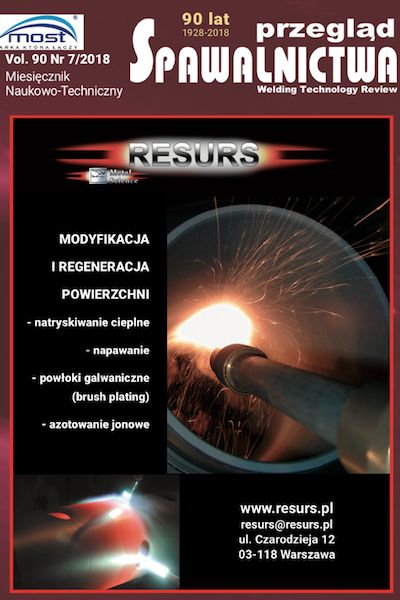The assessment of welded joints microstructure for Inconel 617 alloy
Main Article Content
Abstract
In connection with the adoption of the energy and climate package by the member states of the European Union, it is necessary to increase energy efficiency while minimizing greenhouse gas emissions to the atmosphere. Higher efficiency of power units with reduced emission of pollutants is possible to achieve by increasing thermodynamic parame- ters of steam (pressure and temperature). The replaced candidate for the most loaded boiler elements is the Inconel 617 alloy. In the national literature there is no detailed information on the evaluation of the microstructure of welded joints from the tested alloy. The obtained test results in the future will be used by constructors and designers in estimating the durability of welded joints of the Inconel 617 alloy.
Downloads
Article Details
Creative Commons CC BY 4.0 https://creativecommons.org/licenses/by/4.0/
Welding Technology Review (WTR) articles are published open access under a CC BY licence (Creative Commons Attribution 4.0 International licence). The CC BY licence is the most open licence available and considered the industry 'gold standard' for open access; it is also preferred by many funders. This licence allows readers to copy and redistribute the material in any medium or format, and to alter, transform, or build upon the material, including for commercial use, providing the original author is credited.
References
Hernas A., Dobrzański J., Pasternak J., Fudali S.: Charakterystyki nowej generacji materiałów dla energetyki, Wydawnictwo Politechniki Śląskiej, Gliwice, 2015.
Hernas A.: Materiały do budowy kotłów na parametry nadkrytyczne, Nowa Energia, 5-6, 2013, s. 2-7.
Ma L.: Identifying and Understanding Environment-Induced Crack Propagation Behavior in Solid Strengthened Ni-Based Superalloys, Project No. 09-803, University of Nevada, 2012.
Tuz L., Pańcikiewicz K., Tasak E., Adamiec J.: Ocena mikrostruktury wybranych stopów niklu, Przegląd Spawalnictwa, nr 5, 2014, s. 64-67.
Tuz L., Pańcikiewicz K., Tasak E., Adamiec J.: Badania skłonności do pęknięć gorących stopów niklu, nr 4, 2016, s. 162-169.
Capros P., Tasios N., Marinakis A.: Very high penetration energy sources to the European electricity system in the context of model-based analysis an energy roadmap towards a low carbon EU economy by 2050, 9th International Conference on the European Energy Market, Florencja, 2012, pp. 1-8.
Patel S. J., deBarbadillo J. J., Baker B. A., Gollihue R. D.: Nickel Base Superalloys for Next Generation Coal Fired AUSC Power Plants, Procedia Engineering, nr 55, 2013, pp. 246-252.
Norma ASME SB-168:2013 Specification for nickel-chromium-iron alloys (UNS N06600, N06601, N06603, N06690, N06693, N06025, and N06045) and nickel-chromium-cobalt-molybdenum alloy (UNS N06617) plate, she- et and strip.
